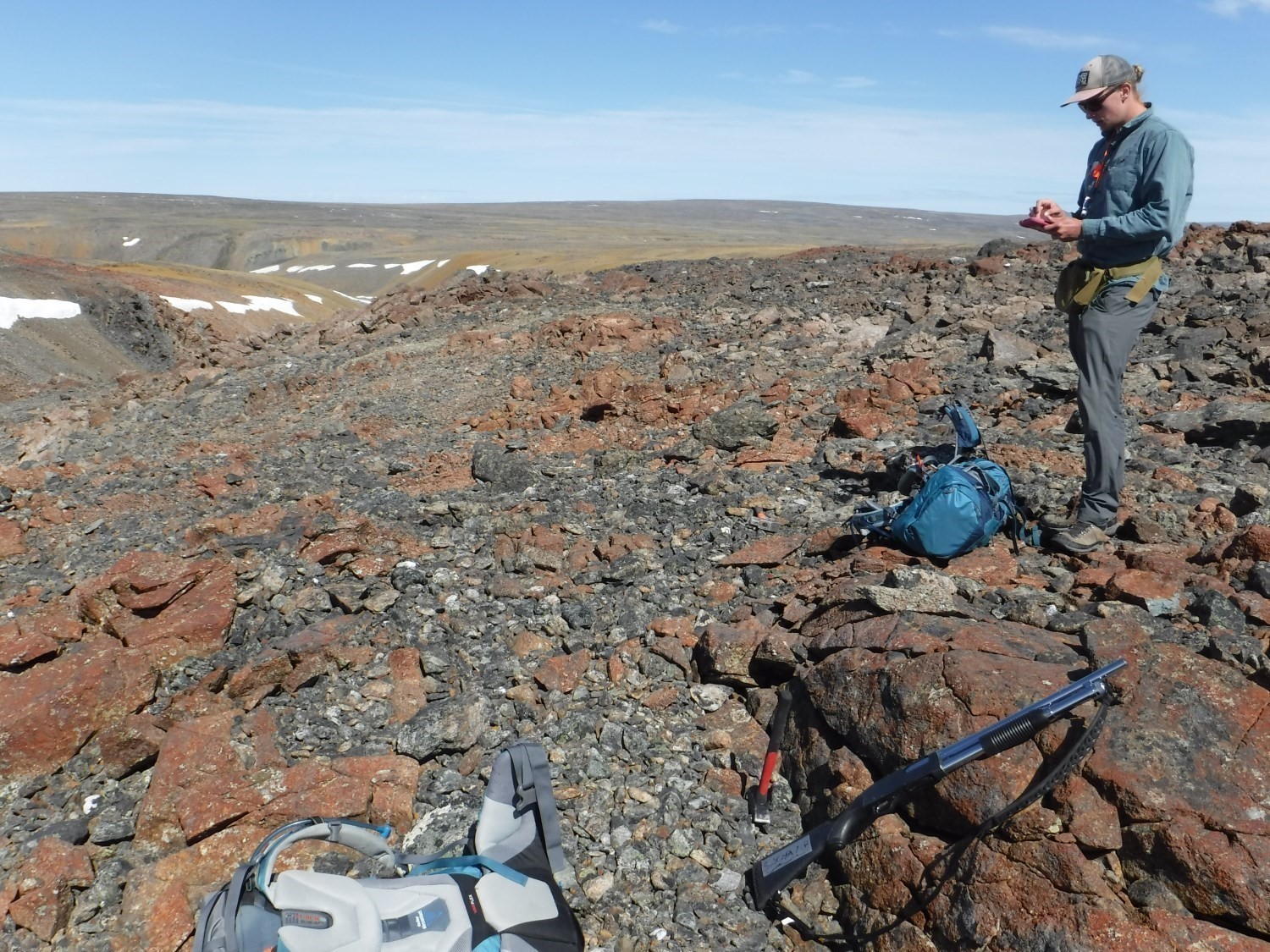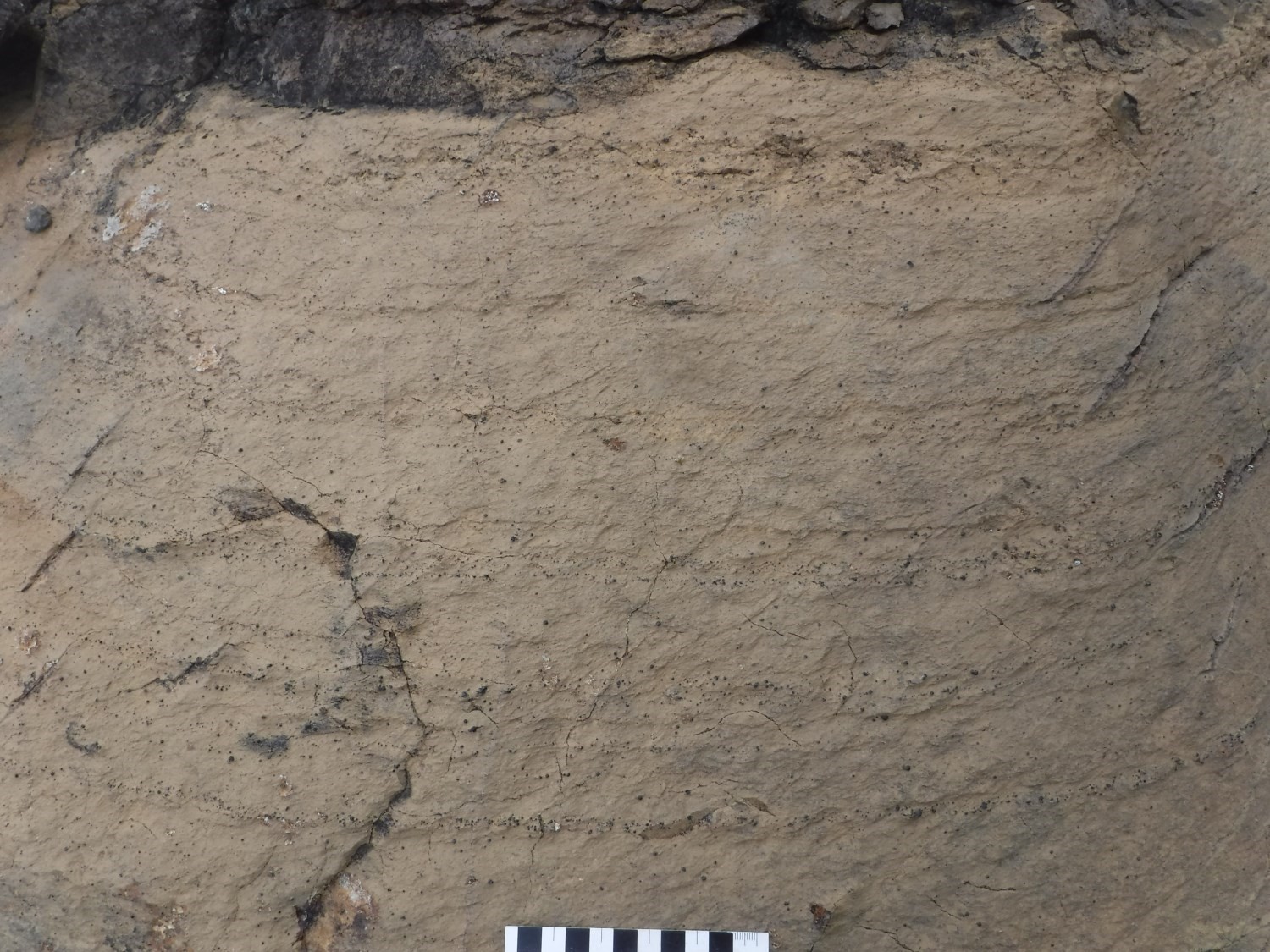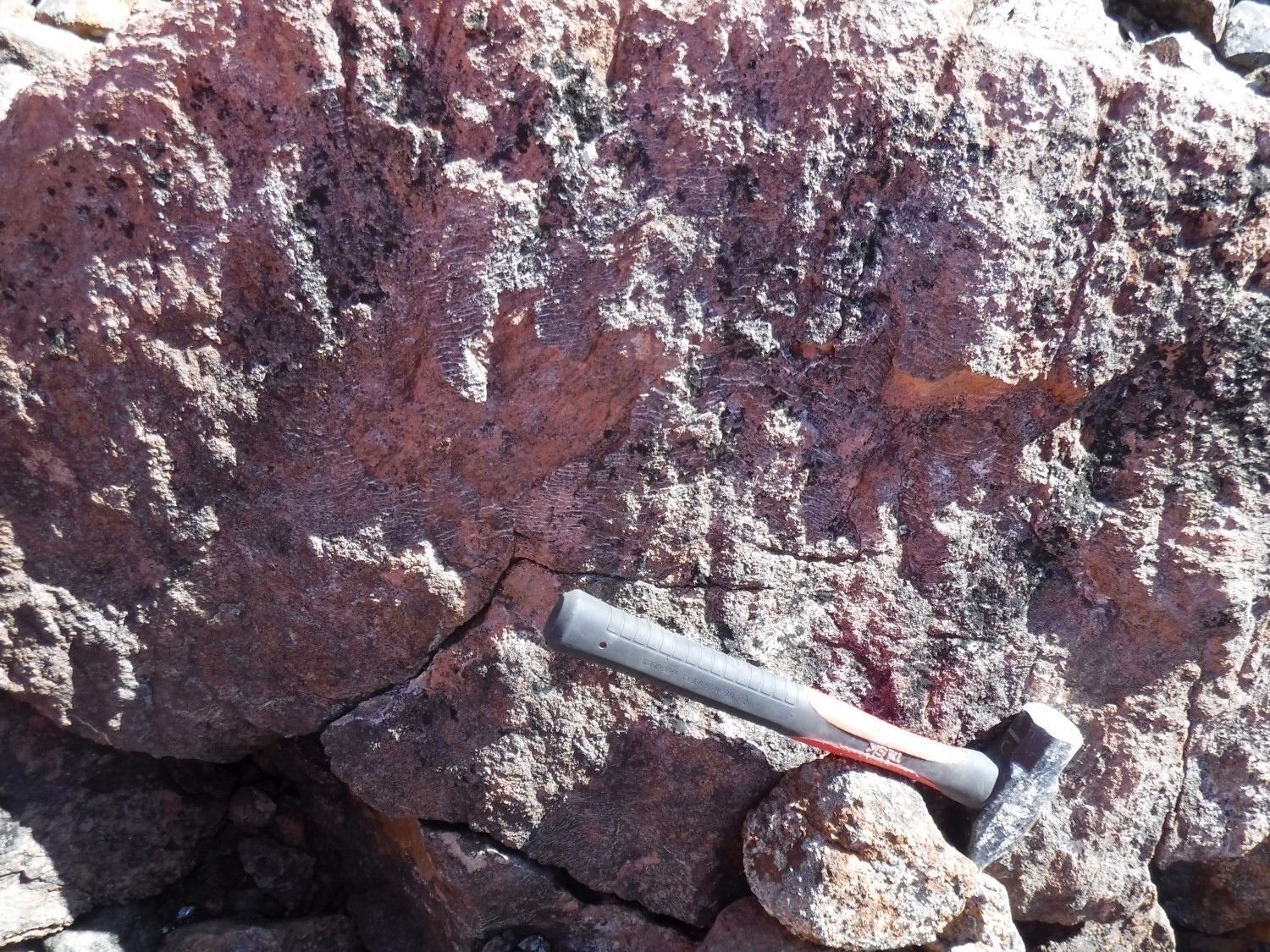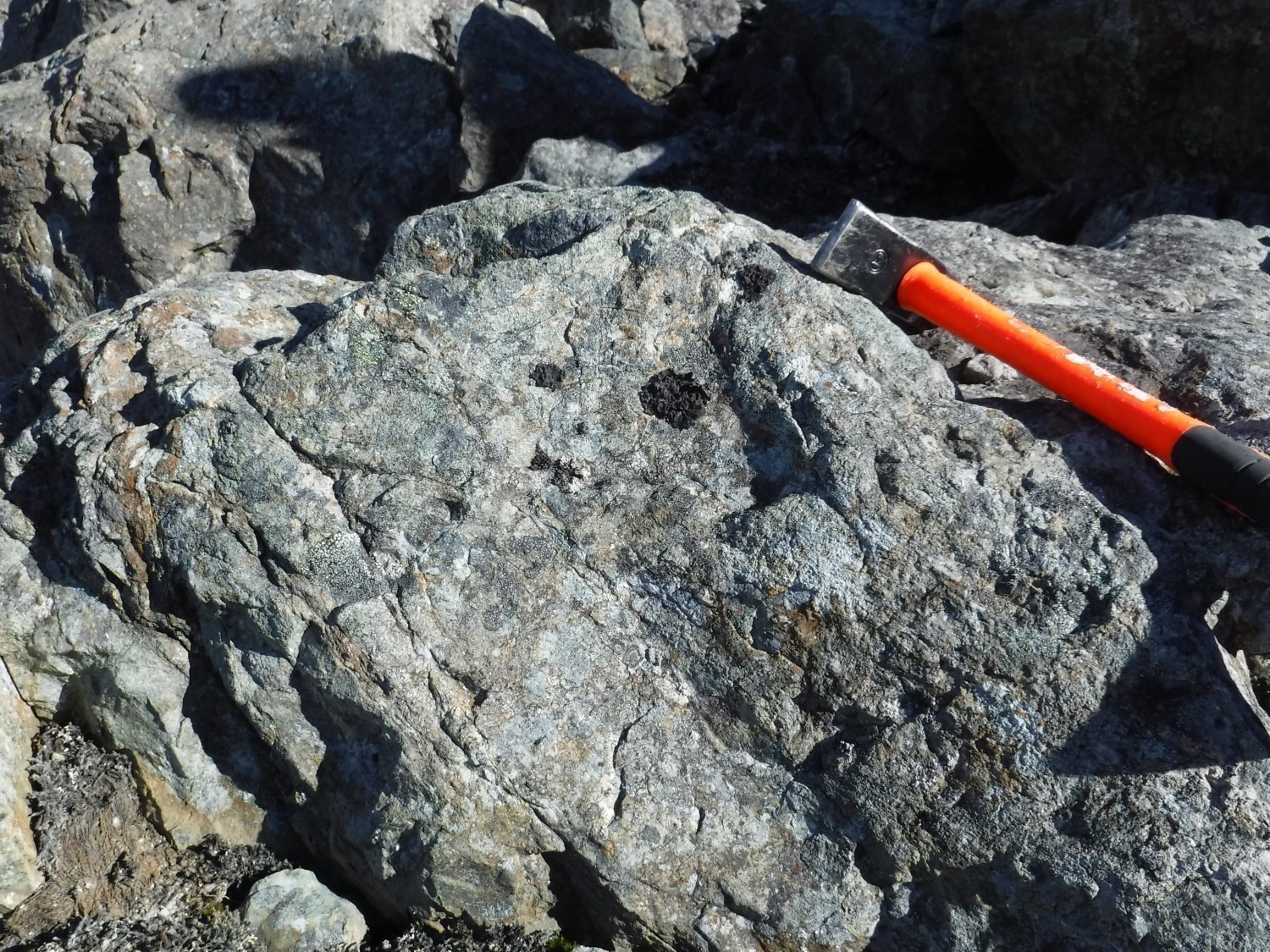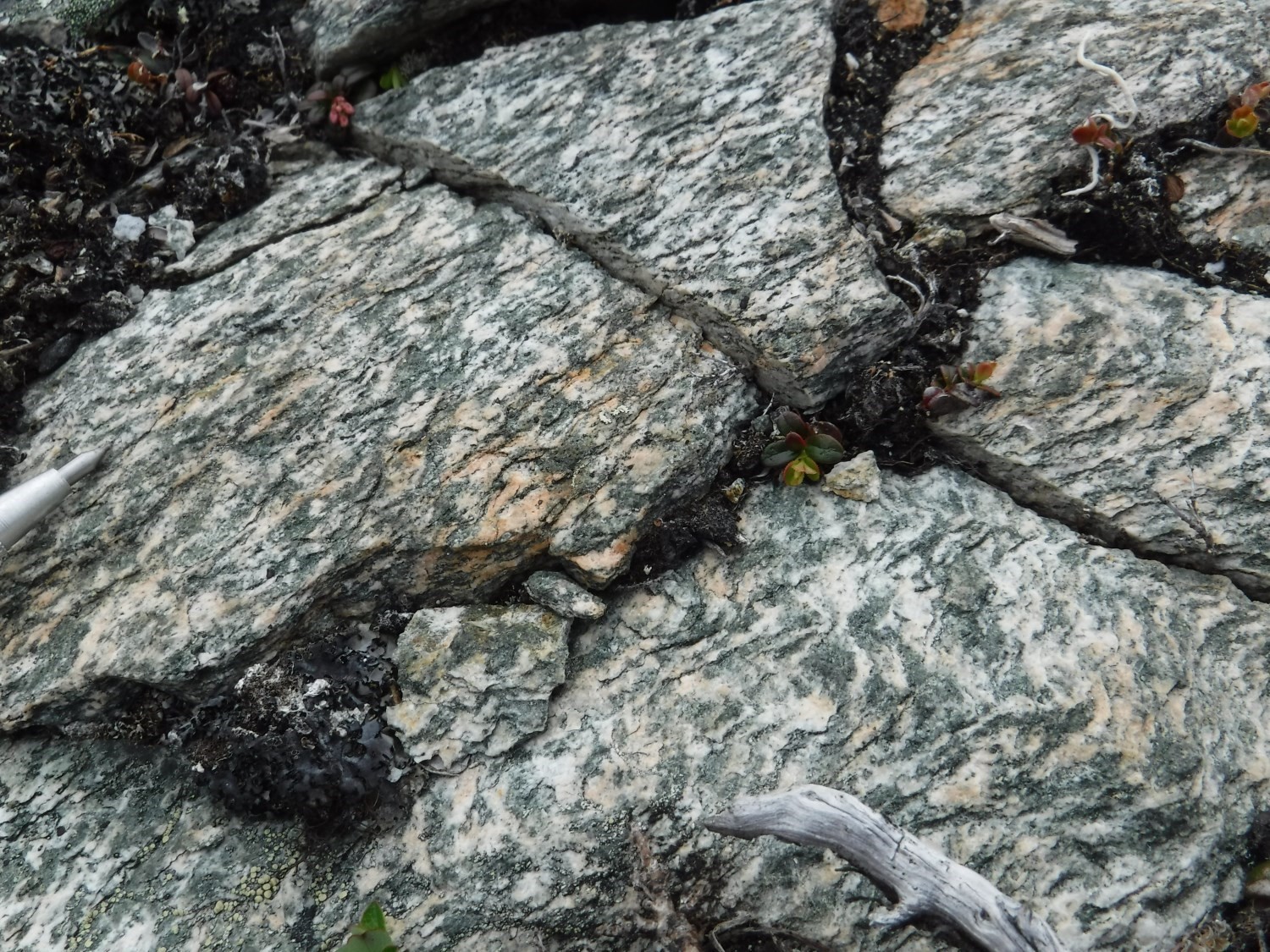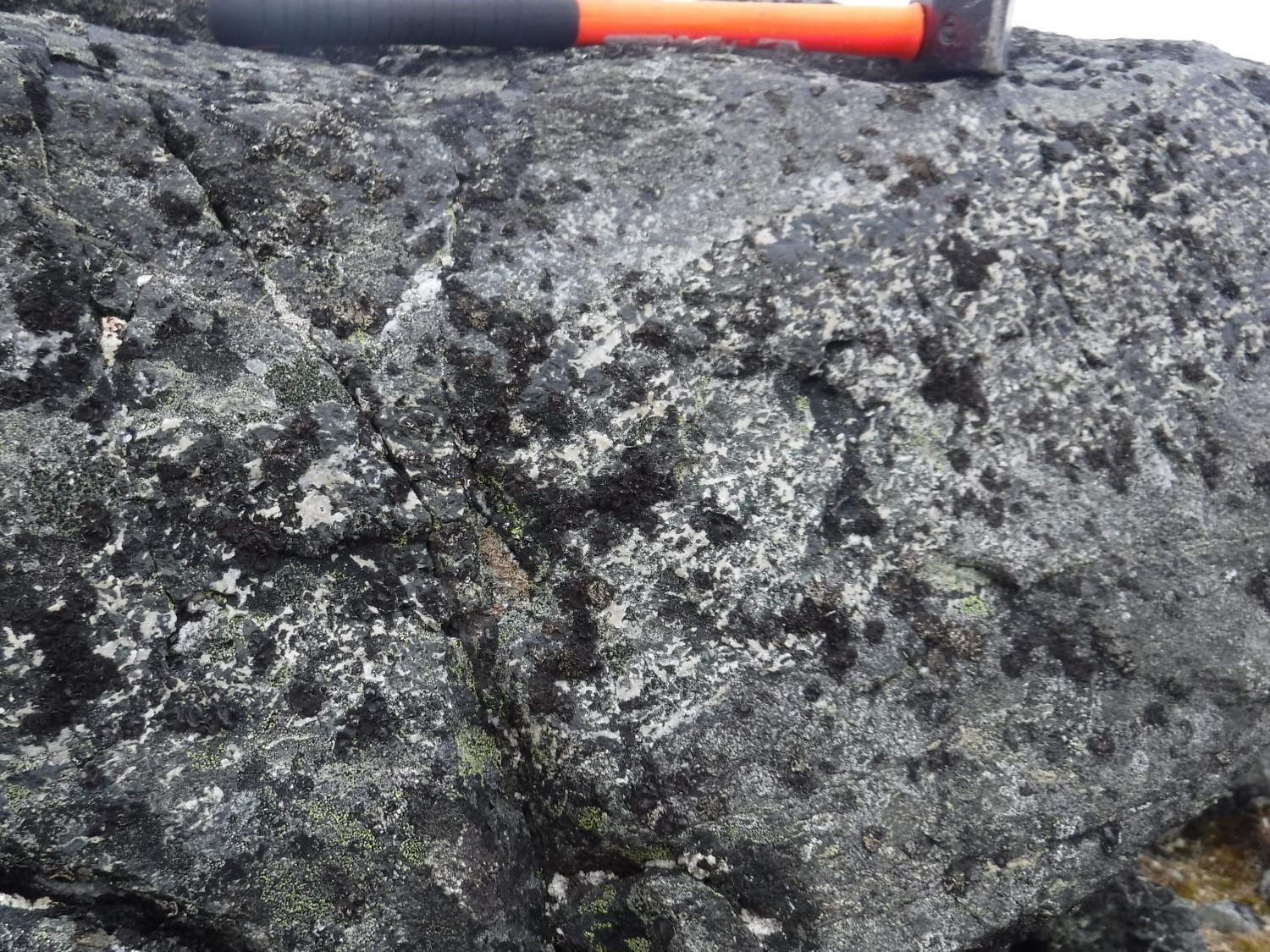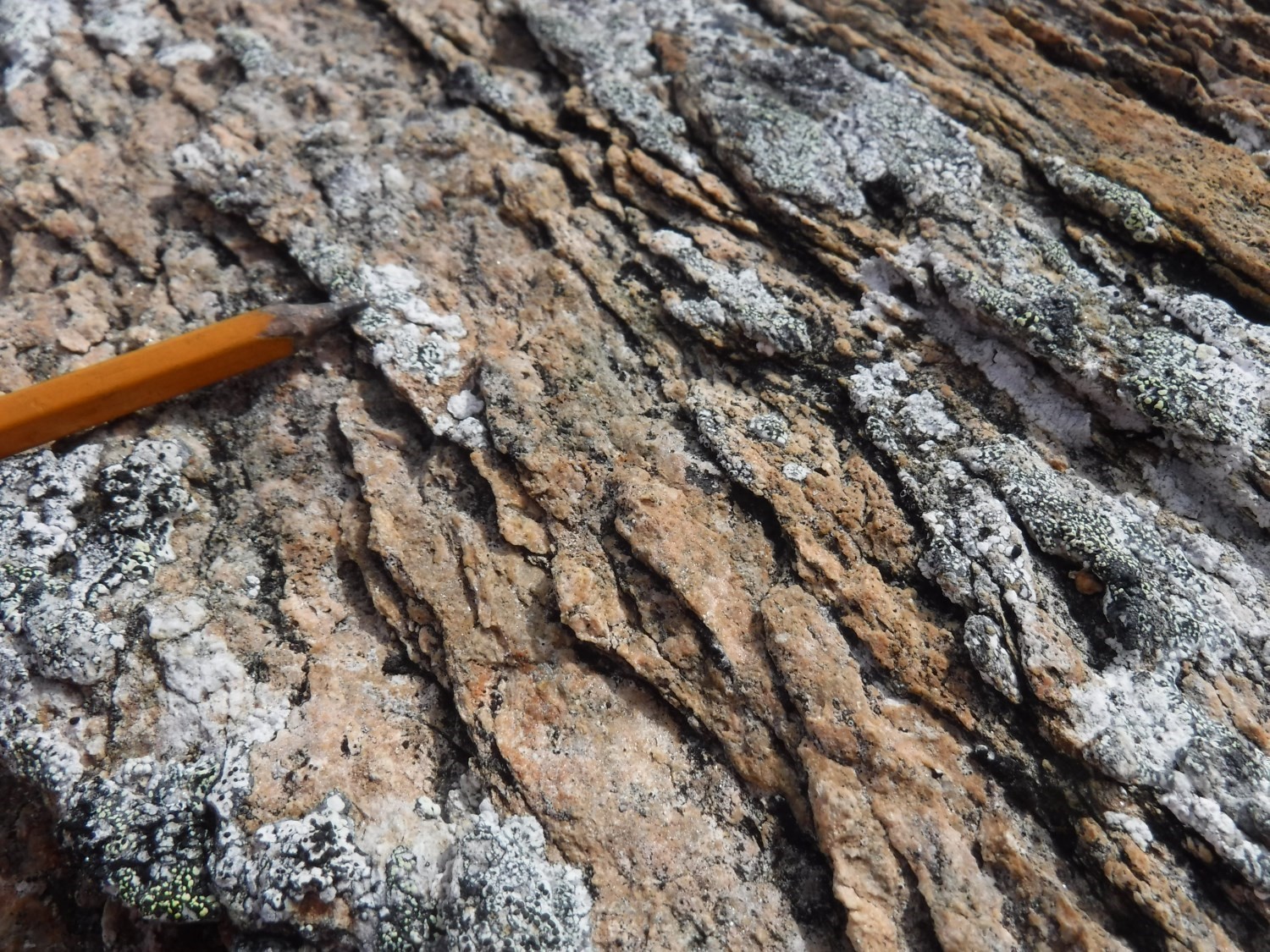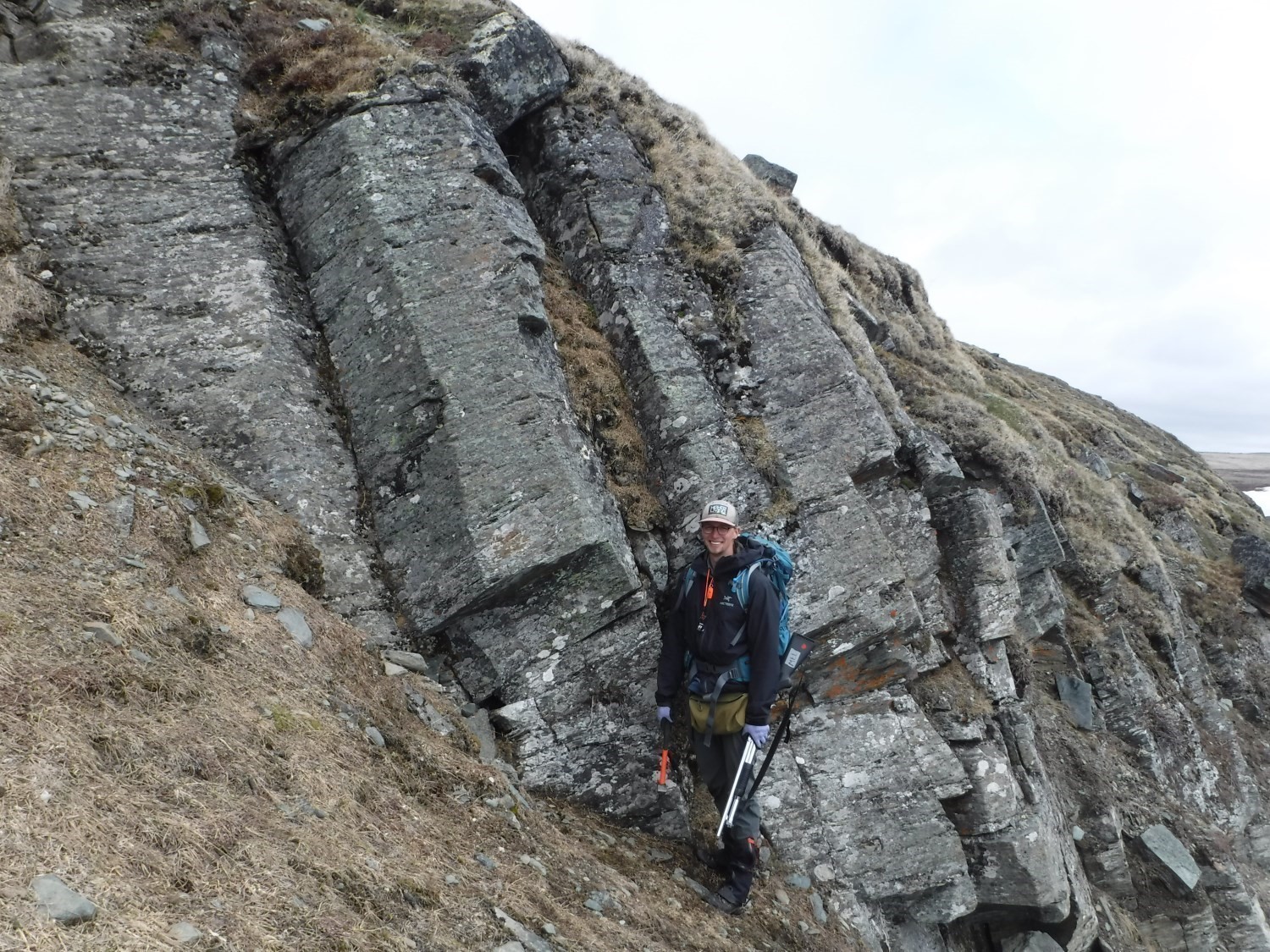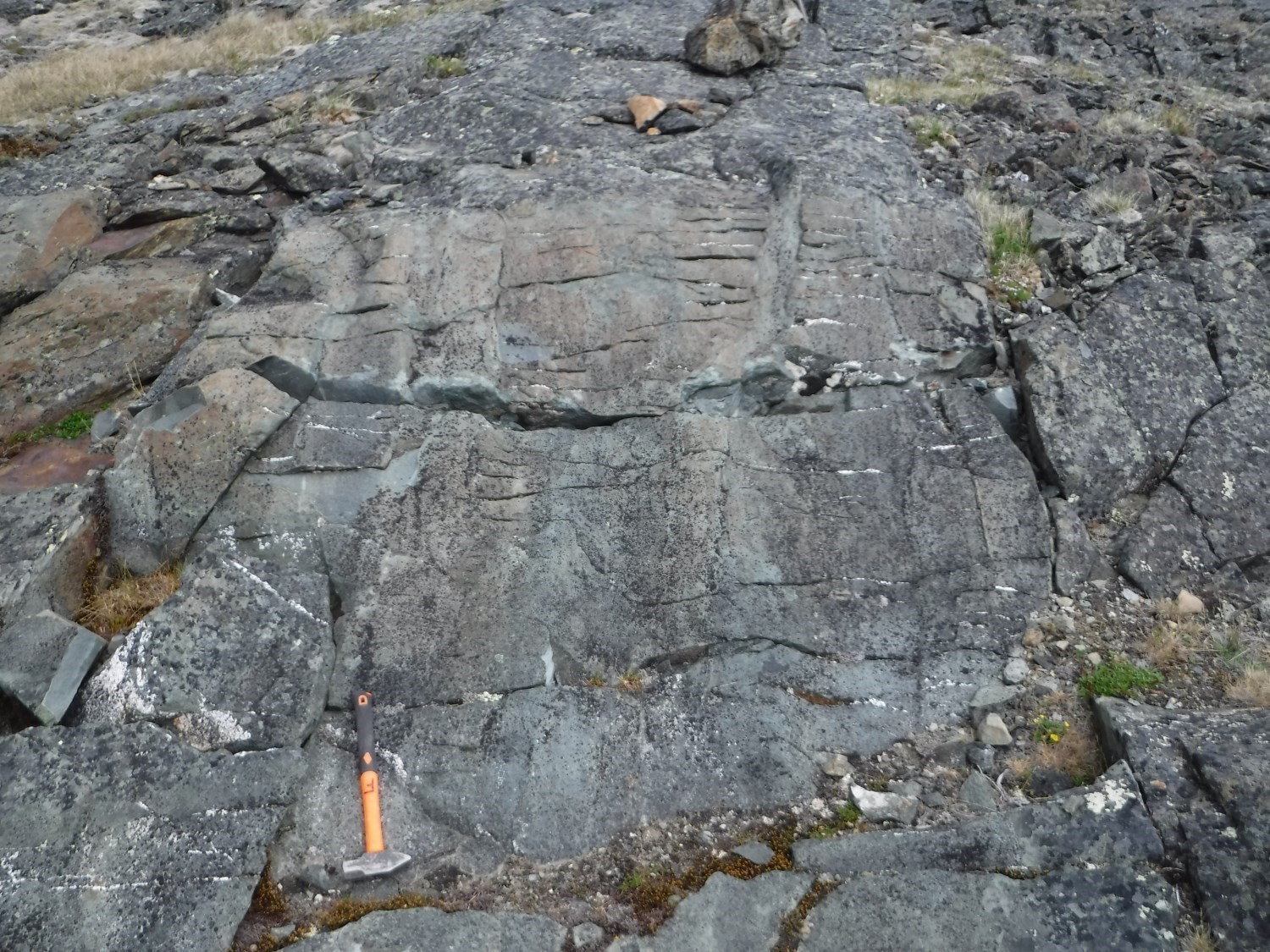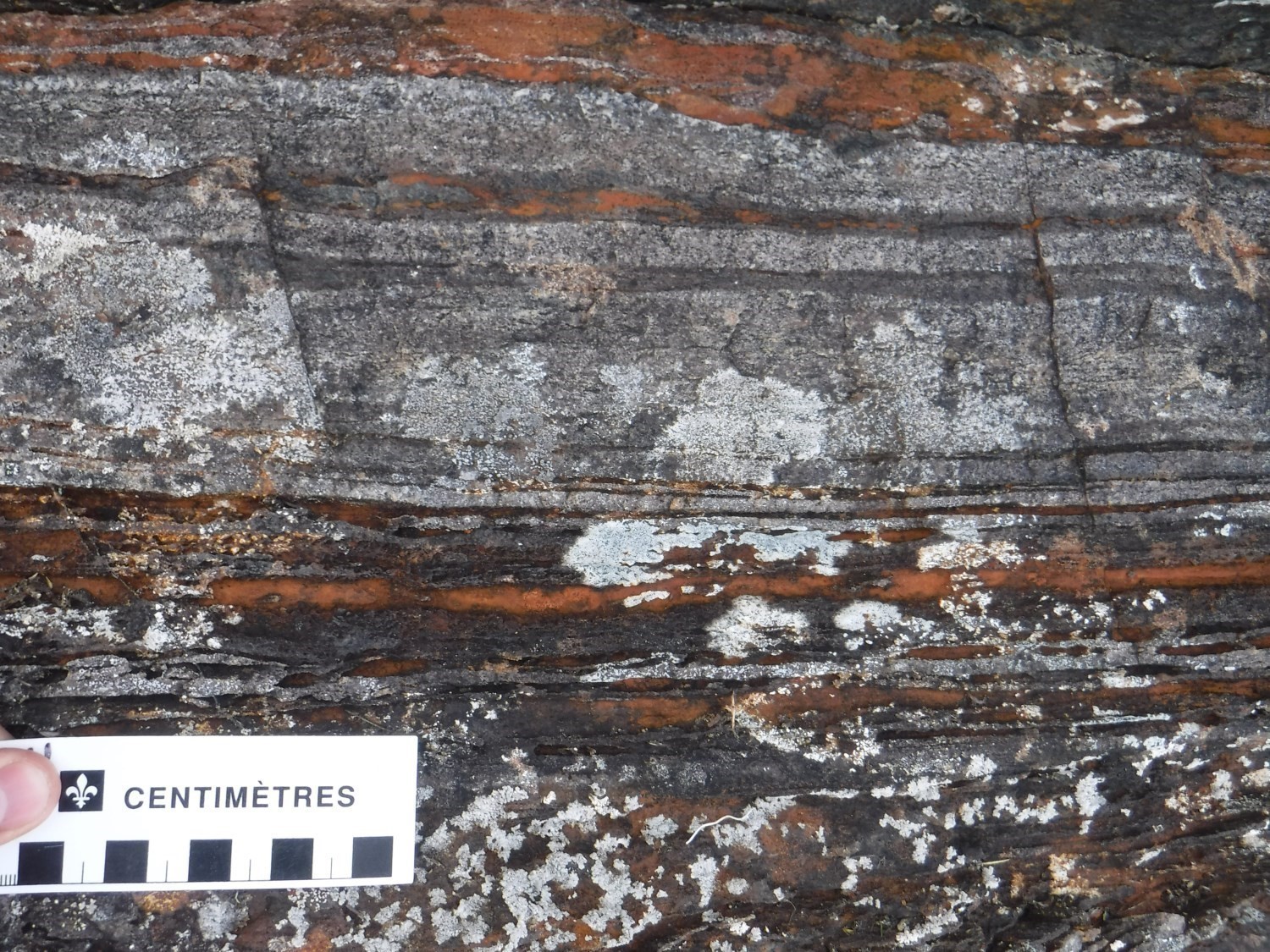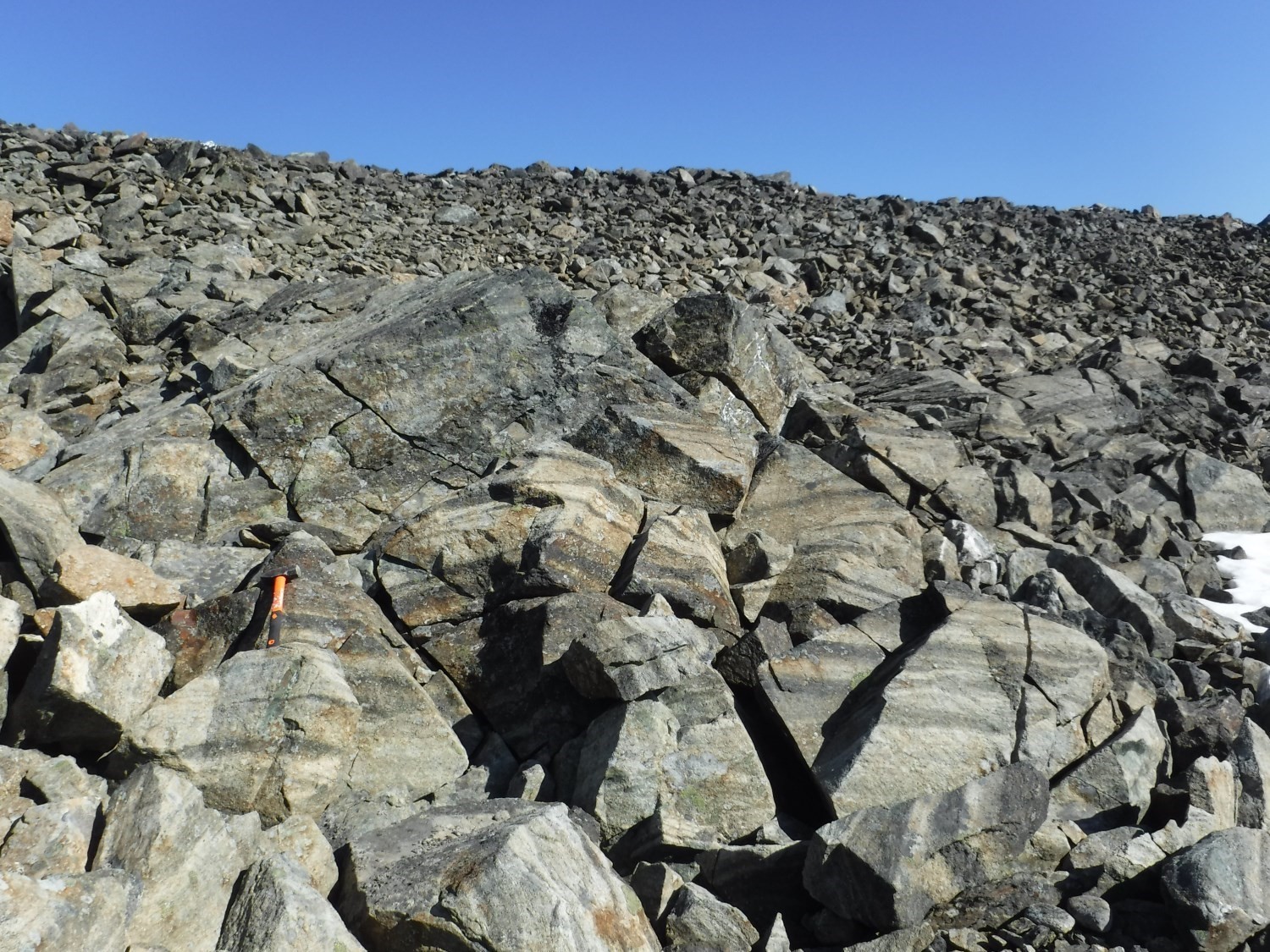
Last modified:
Translation of original French
| Author: | Lamothe et al., 1984 |
| Age: | Paleoproterozoic |
| Reference section: | None |
| Type area: | Northern Domain |
| Geological province: | Churchill Province |
| Geological subdivision: | Ungava Orogen / Ungava Trough / Northern Domain |
| Lithology: | Ultramafic and mafic layered intrusive sequences and supracrustal sequence (basalt, microgabbro and iron formation) |
| Type: | Lithostratigraphic |
| Rank: | Group |
| Status: | Formal |
| Use: | Active |
None
Background
The Watts Group was created by Lamothe et al. (1984) to describe an assemblage of volcanic rocks, and to a lesser extent sedimentary rocks, associated with a greater volume of ultramafic and mafic layered intrusive rocks located in the Ungava Orogen Northern Domain. The presence of sheet dykes and the association of basalts with ultramafic and mafic layered intrusive rocks led St-Onge et al. (1988) to propose that the Watts Group could represent a dismembered ophiolitic suite. Based on reanalysis of available lithogeochemical data as well as U-Pb ages, Kastek et al. (2018) propose a common genetic link between the Watts Group, Minto Dykes and Beauparlant Formation, thus defining a “large igneous province” that would have been emplaced between 2040 Ma and 1991 Ma. Following geological mapping work in the summer of 2018, Mathieu and Beaudette (2019) introduced new units to refine mapping, as shown in the table below.
| Standardized Units and Subunits (Sheets 35G09-35G16, 35H13-35H14) | Lithologies | Previous Units and Subunits (Sheets 35G10-35G15, 35F08, 35F09 and 35F16) | Reference(s) |
| pPwa1 | Peridotite, dunite; minor amount of pyroxenite | Mathieu and Beaudette, 2019 | |
|
pPwa1a |
Peridotite | pPwa2 | Lamothe et al., 1984 |
|
pPwa1b |
Dunite | pPwa1 | Lamothe et al., 1984 |
|
pPwa1c |
Altered ultramafic rock, serpentinite | Mathieu and Beaudette, 2019 | |
|
pPwa1d |
Pyroxenite | Mathieu and Beaudette, 2019 | |
| pPiqt (Illuinaqtuut Pluton) | Homogeneous and massive grey pyroxenite | pPwa3 | Lamothe et al., 1984 |
| pPwa2 | None | Mathieu and Beaudette, 2019 | |
| pPwa3 | Gabbro | pPwa4 | Lamothe et al., 1984 |
|
pPwa3a |
Leucocratic gabbro, anorthosite | Mathieu and Beaudette, 2019 | |
|
pPwa3b |
Coarse-grained speckled gabbro | Mathieu and Beaudette, 2019 | |
|
pPwa3c |
Layered gabbro | Mathieu and Beaudette, 2019 | |
|
pPwa3d |
Fine to medium-grained mesocratic gabbro | Mathieu and Beaudette, 2019 | |
|
pPwa3f |
Altered gabbro | Mathieu and Beaudette, 2019 | |
|
pPwa3g |
Garnet melanocratic gabbro | Mathieu and Beaudette, 2019 | |
|
pPwa3h |
Diorite, porphyritic gabbro | Mathieu and Beaudette, 2019 | |
|
pPwa3i |
Anorthosite | Mathieu and Beaudette, 2019 | |
| pPwa4 | None | Mathieu and Beaudette, 2019 | |
| pPwa5 | Basalt, synvolcanic gabbro | pPwa5-pPwa6 | Lamothe et al., 1984 |
|
pPwa5a |
Pillow basalt | Mathieu and Beaudette, 2019 | |
|
pPwa5b |
Mafic volcaniclastics | Mathieu and Beaudette, 2019 | |
|
pPwa5c |
Synvolcanic gabbro sill | Mathieu and Beaudette, 2019 | |
| pPwa6 | Chlorite-actinolite schist, exhalite, chert, carbonate facies iron formation, semi-massive sulphides | Mathieu and Beaudette, 2019 |
Description
The Watts Group consists of an assemblage of mafic to ultramafic intrusive and extrusive rocks interpreted as an ophiolitic sequence comprising: mafic and ultramafic rock layered sequences, pillowed or massive basalt flows, mafic sills and sheet dykes, all cut by sparse plagiogranite intrusions (St-Onge and Lucas, 1993). The ophiolitic assemblage is dismembered by a series of thrust slices that cause repetition of the stratigraphic piling, with a total thickness of just over 9000 m (Scott et al., 1992). The base of the stratigraphic sequence consists of a kilometre-thick layer of dunite and peridotite with cumulate texture, decimetric to metric layering and variable amounts of metamorphic minerals derived from olivine or pyroxene (Scott et al., 1989). It gradually changes to layered hornblende-plagioclase gabbro (hornblende derived from pyroxene) that forms centimetre to metre-thick layers with cumulate textures (Scott, 1990). A sheet dyke complex is preserved east of Watts Lake (Scott, 1990). These dykes have a MORB signature (Scott et al., 1989; Scott, 1990). Towards the top, the complex changes to a pillow basalt assemblage with N-MORB tholeiitic signature (Scott et al., 1989, 1991). Few sparse plagiogranite intrusions cutting basalt were reported by St-Onge and Lucas (1993).
Watts Group 1 (pPwa1): Peridotite, Dunite; Minor Amount of Pyroxenite
This unit groups the majority of ultramafic facies that are impossible to individualize on the mapping scale considered. Most facies are observed on the same outcrop. Lamothe (2007) writes in his stratigraphic lexicon:
« This subdivision consists of a sequence of layered ultramafic rocks. In thin sections, adcumulate textures are very well developed. Two types of layered sequences have been identified: 1) the first type is a large package in tectonic contact with layered gabbroic units and clastic metasedimentary rocks; 2) the second type shows gradual primary contact between peridotites and gabbros by increasing the number and thickness of plagioclase layers (Scott et al., 1992). There are also conformable chromite layers in NE Watts Lake and south of Purtuniq (St-Onge and Lucas, 1993).”
Watts Group 1a (pPwa1a): Peridotite
Peridotite is the main ultramafic facies of the Watts Group. Outcrops feature a typical “elephant skin” texture, as well as a dark red to medium red-brown patina and a very dark fresh surface. It is generally layered and characterized by high magnetic susceptibility.
Watts Group 1b (pPwa1b): Dunite
This subunit is the latest of the pPwa1 ultramafic assemblage. Dunite dykes cut peridotite. The contacts are straight, even when overprinted by regional deformation. Dunite also outcrops as horizons that can be mapped at 1:50 000 scale. It is easily individualized by its typical ochre patina. It shows transposed primary centimetric layering highlighted by the alignment of euhedral chromite crystals with magnetite rim. Dunite is highly magnetic.
Watts Group 1c (pPwa1c): Altered Ultramafic Rock, Serpentinite
This subunit includes all altered (essentially seprentinized) facies of Watts Group ultramafic intrusions. It outcrops mostly adjacent to thrusting of the Watts Group on other regional units. The Asbestos Hill asbestos mine, located in Purtuniq, operated in this subunit. Subunit pPwa1c is individualized by its uneven discoloured surface appearance (e.g., dunite with green and pink patina).
Watts Group 1d (pPwa1d): Pyroxenite
Pyroxenite is a minor facies of the ultramafic sequence. Metric to decametric layers are interstratified in peridotite. The relationship between subunits pPwa1a and pPwa1d appears to be cogenetic. The patina is greenish-grey and the fresh surface is green. Finally, pyroxenite is moderately magnetic.
Watts Group 3 (pPwa3): Gabbro
Lamothe (2007) writes in his stratigraphic lexicon of the Ungava Orogen:
« This subdivision represents the largest volume of rock in the Watts Group. Gabbros are coarse grained and characterized by centimetric and metric layers which are defined by their mineralogical content. There are two types of layers: 1) dark hornblende-rich metapyroxenite layers, and 2) plagioclase-zoisite meta-anorthosite layers. The petrographic study of this gabbroic sequence indicates a fractional crystallization origin (cumulate). In addition, their geochemical signature is tholeiitic (St-Onge and Lucas, 1993).”
The unit groups the majority of observed mafic facies, where they are impossible to individualize at the mapping scale considered. This unit is weakly magnetic.
Watts Group 3a (pPwa3a): Leucocratic Gabbro, Anorthosite
This subunit consists of alternating metric to decametric strips of light beige leucogabbro and granoblastic anorthosite. The proportion of ferromagnesian minerals ranges from 5% to 25%.
Watts Group 3b (pPwa3b): Coarse-Grained Speckled Gabbro
This facies appears to be spatially associated with subunit pPwa3a leucogabbro, with which it is in transitional contact. More specifically, it locally cuts subunit pPwa3c layered gabbro.
Watts Group 3c (pPwa3c): Layered Gabbro
Subunit pPwa3c forms the major part of Watts Group mafic intrusive facies. It consists of gabbro varying from leucocratic to melanocratic, exhibiting centimetric to decametric banding interpreted as preserved primary layering.
Watts Group 3d (pPwa3d): Fine to Medium-Grained Mesocratic Gabbro
This subunit is characterized by its high homogeneity and lack of outcrop-scale layering. The rock is not magnetic. The grain size of recrystallized clinopyroxene and plagioclase ranges from fine to medium.
Watts Group 3e (pPwa3e): Melanocratic Gabbro
This is a minor subunit of the Watts Group, more specifically a finely recrystallized and very homogeneous melanocratic gabbro. This facies also incorporates pyroxenite layers.
Watts Group 3f (pPwa3f): Altered, Carbonated Gabbro
This minor subunit groups altered facies, mainly to carbonates, observed in gabbro. The patina is lighter and shinier. Effervescence caused by the hydrochloric acid test is strong.
Watts Group 3g (pPwa3g): Garnet Melanocratic Gabbro
Facies pPwa3g is located in the vicinity to the northern thrusting of the Northern Domain on the Kovik Complex. It outcrops as highly deformed and generally magnetic decametric strips. Both the patina and fresh surface are spruce green. Garnet is late cinematic and locally surrounded by plagioclase rim. The content of dark red garnet is generally <5%.
Watts Group 3h (pPwa3h): Diorite, Porphyritic Gabbro
This minor subunit outcrops in the eastern section of the Northern Domain, in the vicinity and within tectonic slices that define its northern boundary. It consists of moderately deformed diorite and gabbro with white and green patina.
Watts Group 3i (pPwa3i): Anorthosite
This subunit consists of white anorthosite that is generally observed cutting other mafic intrusive facies of the Watts Group. Although this is the late term of the Watts Group mafic piling, the rock is also strongly affected by regional deformation. The patina is milky white and the fresh surface is white with a slight yellowish glow linked to moderate plagioclase sericitization. Some anorthosite dykes and layers may correspond to plagiogranite reported by St-Onge and Lucas (1993). Finally, the subunit is not magnetic.
Watts Group 5 (pPwa5): Basalt, Synvolcanic Gabbro
This subdivision groups supracrustal lithologies of the Watts Group. In the eastern section of the Northern Domain (sheets 35G09, 35G16 and 35H13), volcanic rocks and associated cogenetic dykes are commonly metamorphosed to amphibole-plagioclase schist, which locally contains preserved primary volcanic textures (pillows, fragments or columnar joints). In the eastern portion, this unit is characterized by a medium to dark green patina and a green fresh surface.
St-Onge and Lucas (1993) report a sheet dyke complex with fine to coarse-grained amphibolite screens preserved in the Watts Group 5 km east of Watts Lake and 6.5 km west of Purtuniq. It outcrops over an area 400 m wide by 700 m long. Dykes, 20 to 40 cm wide, are NE oriented and display a steep dip. A 2 to 3 mm thick chilled margin is generally preserved on one side. The chemical composition of dykes indicates a tholeiitic signature. This subdivision consists of a partially tectonized sequence of pillow basalts. It is in transitional stratigraphic continuity with microgabbro or a massive flow sequence. Deformed pillows, 1 to 2 m long, are elongated with the main foliation. This basalt is of tholeiitic affinity. In addition, the pillow shape indicates that the sequence in this area has a northward normal polarity. Watts Group extrusive facies show low magnetic susceptibility. Locally, cogenetic gabbro dykes are moderately magnetic.
Watts Group 5a (pPwa5a): Pillow Basalt
Preserved pillowed flows are observed locally in the eastern section of the Northern Domain. Pillows are metric in size and flattened along foliation. The few polarity indicators observed in the eastern portion of the Northern Domain suggest a northward normal polarity in the southern section and a southward normal polarity in the northern section. These observations imply the presence of a synform structure along an E-W axis in the domain’s eastern portion.
Watts Group 5b (pPwa5b): Mafic Volcaniclastics
Decametric layers of mafic volcaniclastics have been observed locally in the eastern portion of the Northern Domain (Mathieu and Beaudette, 2019). A strip outcropping in the vicinity of the Kovik Antiform is mapped as a lapilli tuff containing 15% fragments. Fragments are flattened along deformation. Ash tuff was observed east of Watts Lake.
Watts Group 5c (pPwa5c): Synvolcanic Gabbro Sill
Gabbro is fine to medium grained and foliated. The majority of cogenetic gabbro dykes are smaller than a decameter. Locally, some dykes outcrop over more than 100 m of apparent thickness or form swarms mappable at 1:50 000 scale. Locally, these gabbros have moderate magnetic susceptibility.
Watts Group 6 (pPwa6): Chlorite-Actinolite Schist, Exhalite, Chert, Carbonate Facies Iron Formation, Semi-Massive Sulphides
This supracrustal subunit is essentially a hectometre-thick strip outcropping in the western centre of the eastern section of the Northern Domain. It consists of an assemblage of chlorite-actinolite schist interstratified with beds of chert, carbonate facies iron formation and massive sulphides; it is therefore interpreted as an exhalative bed. Finally, this unit is not magnetic.
Thickness and Distribution
Pending.
Dating
Two U-Pb datings (Parrish, 1989) were made on zircons from layered gabbros of the Watts Lake area. These datings gave ages of 1998 ±2 Ma and 1997.5 ±2.5 Ma. An age of 1977 ±3 Ma was interpreted as possibly related to a metamorphic event on the ocean floor.
| Unit | Sample | Isotopic System | Mineral | Crystallization Age (Ma) | (+) | (-) | Metamorphic Age (Ma) | (+) | (-) | Reference(s) |
| pPwa3c | L284-87 (gabbro) | U-Pb | Zircon | 1998 | 2 | 2 | – | – | – | Parrish, 1989 |
| pPwa5 | L283-87 (anorthosite) | U-Pb | Zircon | 1997.5 | 2.5 | 2.5 | 1977 | 3 | 3 | Parrish, 1989 |
Stratigraphic Relationship(s)
Stratigraphic relationships between the Watts Group and other Northern Domain units are not clearly defined. In the southern part of the Northern Domain, the Watts Group is structurally overthrusting the Spartan and Parent groups, and the South Domain Chukotat Group via the Bergeron Fault. In the northern portion of the Northern Domain, the Watts Group thrust sole overthrusts the Nituk Formation. The age of ~2 Ga (Parrish, 1989) of the Watts group, different from the other MORB-type lava assemblage represented by the Chukotat Group (1883-1874 Ma, Kastek et al., 2018) is explained by two different models. According to Picard et al. (1989, 1990), the Watts formed in a basin further north and older than that of the Chukotat. Alternately, Hegner and Bevier (1989) and Scott et al. (1989, 1991) proposed the existence of a single basin whose opening would have spread diachronically. In the latter case, the basin superposition would be the result of a hypothetical displacement along a transforming fault (St-Onge et al., 1992).
In addition, intrusions of the Cape Smith Suite cut the Watts Group. The Illuinaqtuut Pluton intrudes into the Watts Group intrusive facies west of the namesake lake. The Purtuniq Pluton cuts Watts Group peridotite in the Purtuniq area. The Qimmiq Pluton cuts basalts and peridotites of the Watts Group in the River Faucon area. Finally, the Kinguppak Pluton intruded into the supracrustal sequence west of Watts Lake.
Paleontology
Does not apply.
References
Publications available through Sigéom Examine
Lamothe, D. 2007. Lexique stratigraphique de l’Orogène de l’Ungava. MRNF. DV 2007-03, 66 pages and 1 plan.
Lamothe, D., Picard, C., Moorhead, J. 1984. Région du Lac Beauparlant, bande de Cap Smith-Maricourt. MRN. DP-84-39, 2 plans.
Mathieu, G., Beaudette, M. 2019. Géologie de la région du lac Watts, Domaine Nord, Fosse de l’Ungava, Nunavik, Québec, Canada. MERN. BG 2019-04.
Other publications
Hegner, E., Bevier, M.L. 1989. Geochemical constraints on the origin of mafic rocks from the Cape Smith Belt 1. Geoscience Canada; volume 16, pages 148–151. Source.
Kastek, N., Ernst, R.E., Cousens, B.L., Kamo, S.L., Bleeker, W., Söderlund, U., Baragar, W.R.A., Sylvester, P. 2018. U-Pb Geochronology and Geochemistry of the Povungnituk Group of the Cape Smith Belt: Part of a Craton-Scale Circa 2.0 Ga Minto-Povungnituk Large Igneous Province, Northern Superior Craton. Lithos; volumes 320–321, pages 315–331. doi.org/10.1016/j.lithos.2018.09.026.
Parrish, R.R. 1989. U-Pb geochronology of the Cape Smith Belt and Sugluk Block, northern Québec. Geoscience Canada; volume 16, pages 126–130. Source.
Picard, C., Giovenazzo, D., Lamothe, D. 1989. Geotectonic evolution by asymmetric rifting of the Proterozoic Cape Smith Belt, New Quebec. Geoscience Canada; volume 16, pages 130–134. Source.
Picard, C., Lamothe, D., Piboule, M., Oliver, R. 1990. Magmatic and geotectonic evolution of a Proterozoic oceanic basin system: the Cape Smith Thrust-Fold Belt (New-Quebec). Precambrian Research; volume 47, pages 223–249. doi.org/10.1016/0301-9268(90)90040-W.
Scott, D.J., Helmstaedt, H., Bickle, M.J. 1992. Purtuniq ophiolite, Cape Smith belt, northern Quebec, Canada: A reconstructed section of early Proterozoic oceanic crust. Geology; volume 20, pages 173–176. doi:10.1130/0091-7613(1992)020<0173:POCSBN>2.3.CO;2.
Scott, D.J., St-Onge, M.R., Lucas, S.B., Helmstaedt, H. 1989. The 1998 Ma Purtuniq ophiolite: imbricated and metamorphosed oceanic crust in the Cape Smith Thrust Belt, northern Quebec. Geoscience Canada; volume 16, pages 144–147. doi.org/10.12789/gs.v16i3.3614
Scott, D.J., St-Onge, M.R., Lucas, S.B., Helmstaedt, H. 1991. Geology and chemistry of the Early Proterozoic Purtuniq ophiolite, Cape Smith Belt, northern Quebec, Canada In Ophiolite genesis and evolution of the oceanic lithosphere (Peters, T., editor). Kluwer Academic Publishers, Amsterdam; pages 825–857. dx.doi.org/10.1007/978-94-011-3358-6_41.
St-Onge, M.R., Lucas, S.B. 1993. Geology of the eastern Cape Smith belt: parts of the Kangiqsujuaq, cratère du Nouveau-Québec, and lacs Nuvilik map areas, Quebec. Geological Survey of Canada, Memoir 438, 110 pages. doi.org/10.4095/183988.
St-Onge, M.R., Lucas, S.B., Parrish, R.R. 1992. Terrane accretion in the internal zone of the Ungava orogen, northern Quebec. Part 1: Tectonostratigraphic assemblages and their tectonic implications. Canadian Journal of Earth Sciences; volume 29, pages 746–764. doi.org/10.1139/e92-064.
St-Onge, M.R., Lucas, S.B., Scott, D.J., Begin, N.J., Helmstaedt, H., Carmichael, D.M. 1988. Thin-skinned imbrication and subsequent thick-skinned folding of rift-fill, transitional-crust, and ophiolite suites in the 1.9 Ga Cape Smith Belt, northern Quebec. Geological Survey of Canada, Paper no. 88-1C, 118 pages. doi.org/10.4095/122611.


